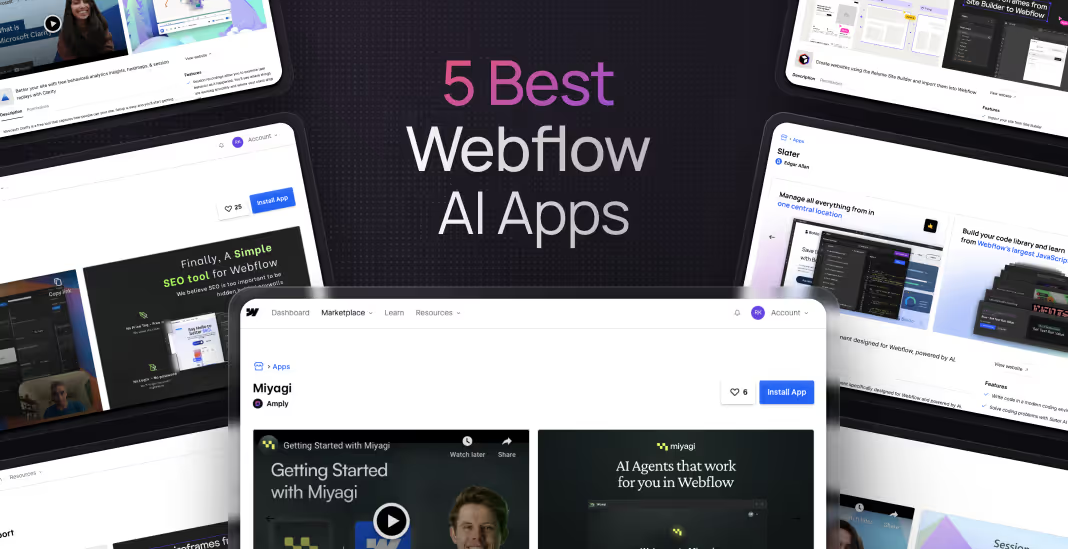Is Your Website ADA-Compliant?
The world has gone digital, especially if you're a B2B SaaS. However, where it all leads to ease and convenience, it also needs to include diversity in all terms, especially for people with conditions. The ADA Compliance Act caters to this factor. *This is not legal advice*
What is ADA Compliance?
Instituted in 1990, ADA (Americans with Disabilities Act) is an attempt to end online discrimination against differing abilities. This act is the extension to the Civil Rights Act of 1964, which is meant to promote support and offer accommodation to people with disabilities.
It includes the implementation of strategies that makes the easy adoption of wheelchair ramps, accessible restroom facilities, and many other such equal-access accommodations in American workplaces.
However, now with changing business dynamics, being Internet-focused, the same strategy needs to be implemented to accommodate disabilities.
What Does ADA Mean for the Websites?
As mentioned above, ADA addresses the convenience for people with conditions, and now it extends to websites as well.
However, we do not see any explicitly stated rules or guidelines to cater to online compliance. It still falls on the businesses to determine ways to adhere to the ADA standards.
To be honest, there is a grey area that still needs to be looked over and analyzed.
What Does The American Legislation Say About It?
- Various courts in America are of the view that ADA rules must be subject to commercial websites the same way they adhere to regular businesses.
- Whereas, some courts state that ADA compliance for a website is only necessary if the business has a physical address.
- The third school of thought exempts online businesses from ADA compliance simply because there is no ruling or explanation in it.
All of these statements from different courts make it difficult to implement any stick rules but offer more of a subjective approach.
The Elephant In the Room for ADA-Compliance Is Complexity
The voice for accommodating accessibility requirements is strengthening, and the federal government is asking online businesses to settle to the standards of WCAG 2.0 Level AA - The guidelines for the online accessibility rules.
However, the online application process for ADA compliance is still not streamlined.
Should I Go for ADA Compliance for My Website?
Making a website accessible for the disabled is like putting adding a wheelchair ramp to your storefront.
To state facts, many websites have issued their own rules for website accessibility to all. And, the lawsuits against such issues also have been registering more in recent years. But, with no regulations to follow, the gamble against companies in these matters might not do any good.
To avoid this, make sure you have a great B2B web design agency to make sure you're in compliance
How Can You Judge If Your Website is ADA-Compliant?
If you want to work for website access to all and also on your brand image, how will you enhance your website accessibility?
It has a simple formula - WCAG 2.0 Level AA guidelines. However, keep in mind that these guidelines offer just a plan of action and do not enforce legislation. Consider it as a model upon which the American online corporate world is based on.
Here is a quick rundown of the WCAG and ADA compliance rules. Let’s start with the levels of compliance that businesses strive to accomplish accessibility.
Levels of Compliance Standards
There are three levels for WCAG.
Level A
It refers to the issues that severely limit the access or use of websites for the disabled visitor.
Level AA
It refers to the issues that are rooted in the functionality of a website and hinder the full experience of the website use. Most commercial websites supposedly try to achieve this level.
Level AAA
It refers to the highest standards where there is no issue in the website accessibility. However, this level is not achieved by any means.
Focused Areas of WCAG
Now, when we know the compliance levels for ADA, we can easily understand the focused areas to categorize the WCAG guidelines. It can be conveniently summed up with the acronym P.O.U.R.
Perceivable issues refer to the user’s ability to find and process the information on a website. For instance, websites with audio descriptions for video content.
Operable issues refer to the visitor’s ability to navigate through the website. For instance, allowing the operations of the site functions only via various flexible commands.
Understandable issues refer to the user’s ability to comprehend the information presented on the website. For instance, an error message with a clear explanation and manual to correct it.
Robust issues refer to the website’s ability to adapt to the changing needs of users with disabilities while meeting standards. For instance, compatible reading screen readers upgrade automatically.
Despite these standards, the future of website accessibility for ADA compliance is still vague. However, most organizations would still find solutions in this regard as it is the right thing to do!
And, why not! After all, with the shifted focus of business equities around customer experience and satisfaction, no business would take the risk to stay outdated merely because they could not improve their web design and development.
Guide To Make Your Website ADA-Compliant
Now to the last and most important section that if you are going for an ADA-compliant website, how can you do it!
We have a 16 step by step guide to help you work in the right direction.
- Step 1: Know all laws and regulations regarding ADA compliance
- Step 2: Include an “alt” tag to all your media files and maps
- Step 3: Include descriptive HTML tags to your online forms
- Step 4: Include a descriptive anchor text to your hyperlinks
- Step 5: Include “skip navigation” links to your landing pages
- Step 6: Include proper heading tags to your text content
- Step 7: Make your PDF files accessible
- Step 8: Include subtitles, transcripts, and audio descriptions to all videos
- Step 9: Choose a WCAG compliant color theme for your website
- Step 10: Make all fonts accessible
- Step 11: Include column headers, identifiers, and cell information in HTML tables
- Step 12: Include the accessible name and an ARIA label to all calls to actions
- Step 13: Make your website accessible with keyboard navigation
- Step 14: Make your location and contact information easily accessible
- Step 15: Check your website accessibility according to the WCAG
- Step 16: Automate your website accessibility
How to Achieve the Excellence of ADA?
While there are guidelines to achieve ADA compliance, the whole result can be generated when you involve your team in the process. Make sure you consider the following points.
Manage Your Content
No matter what content you create for your website or social media, ensure it is easily accessible to people with visual, hearing, motor, and cognitive disabilities.
Make Design User-Friendly
Ensure your web design offers flexibility in all content. For instance, if you have a video published on your website, make sure it has subtitles, transcripts, and audio descriptions.
Use 3rd party accessibility apps
The quickest and easiest way to achieve ADA compliance is using 3rd party accessibility apps like accessiBe. They even offer a seamless Webflow accessibility tool to make sure you're site is accessible.
Businesses Can Win the Digital Space in the Long Run with ADA Compliance
All in all, the decent accessibility of website use is subjective to everyone but it offers a curve to include everyone. It is also in the best interests of companies to be inclusive of a huge population that they might have missed up until now. Ultimately, it will also help search engines to improve your ranking based on several factors as the algorithm is getting smarter. Your sales will improve. So, it will be a win-win situation for everyone.
.avif)



.avif)






